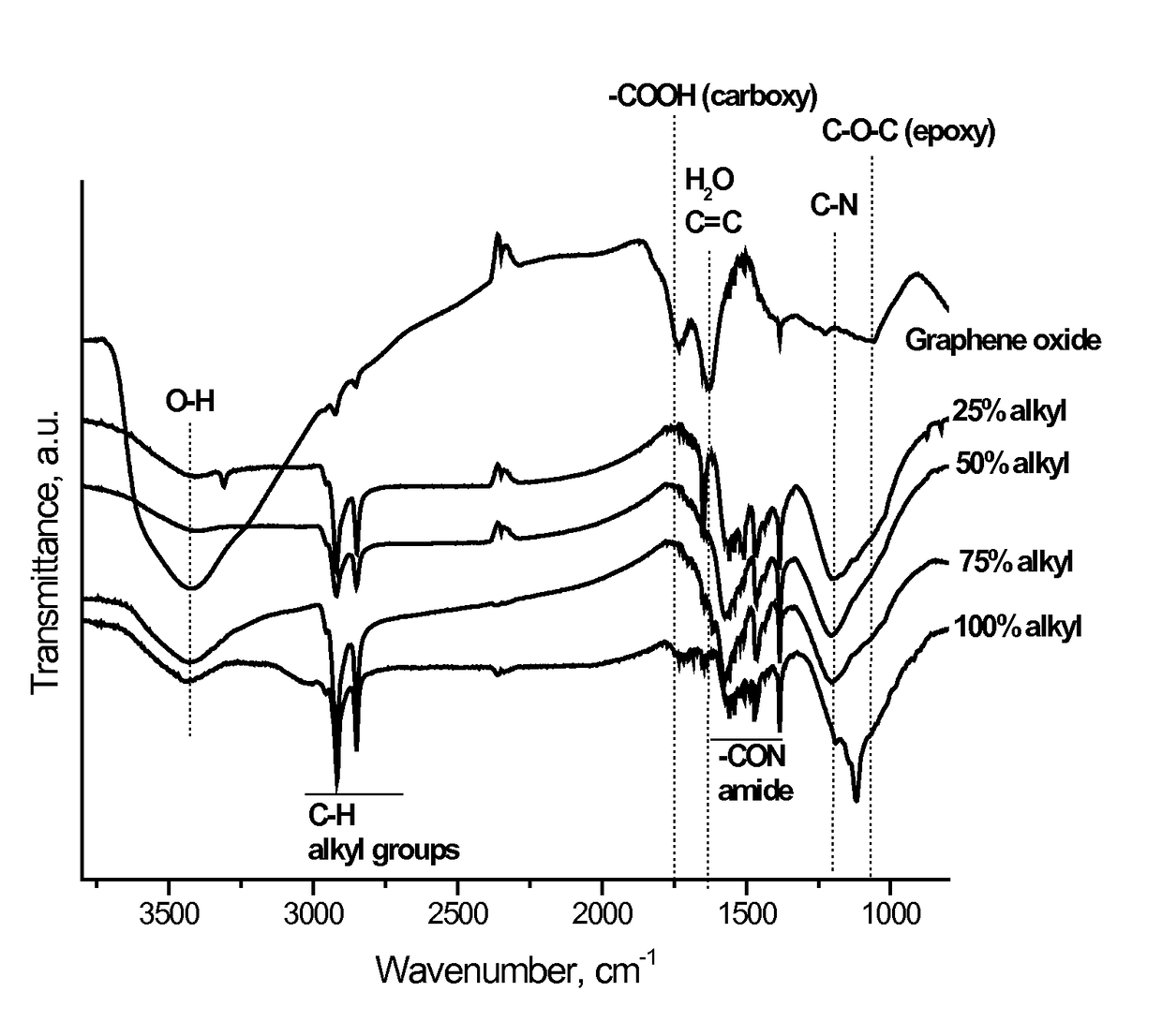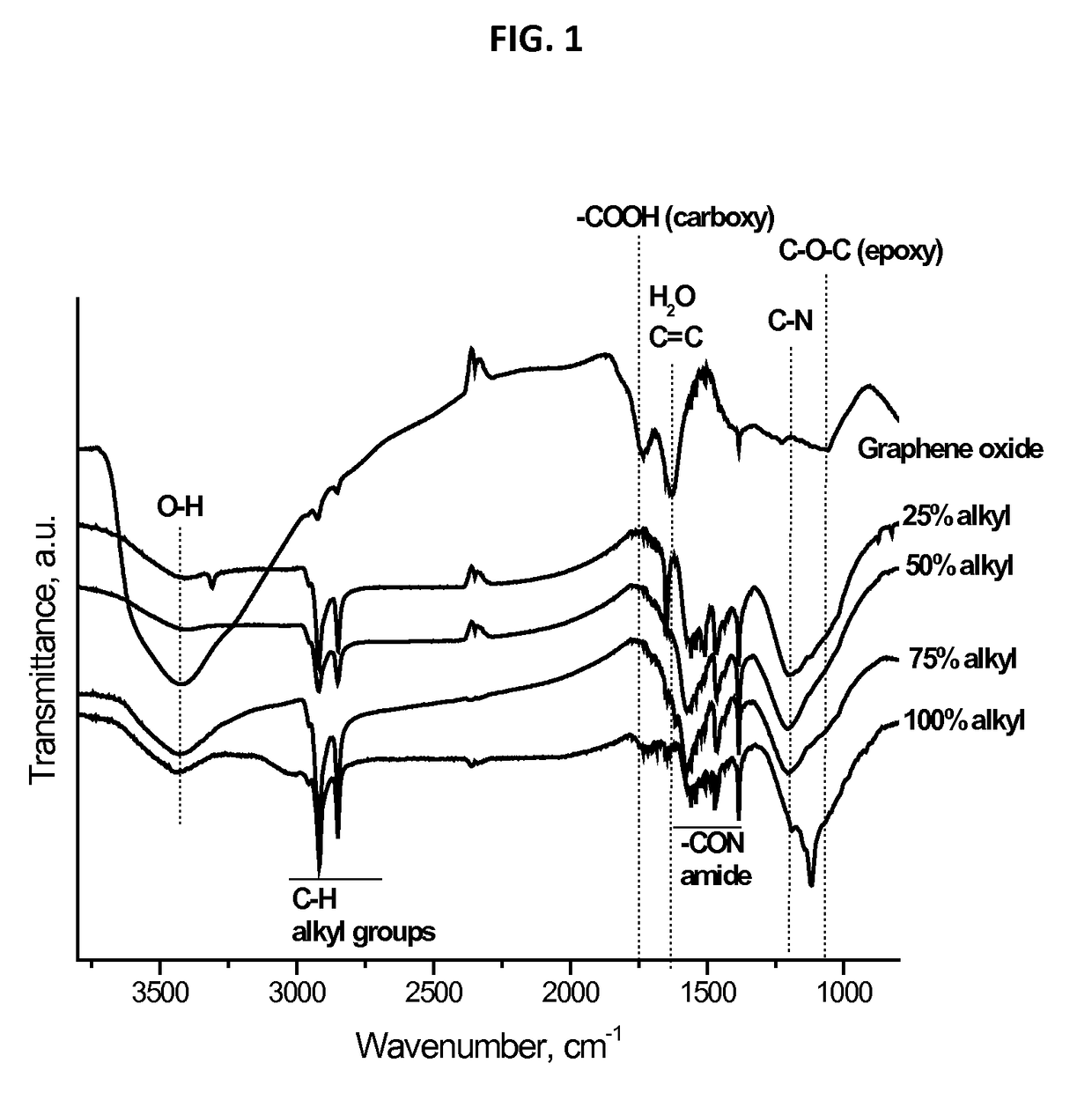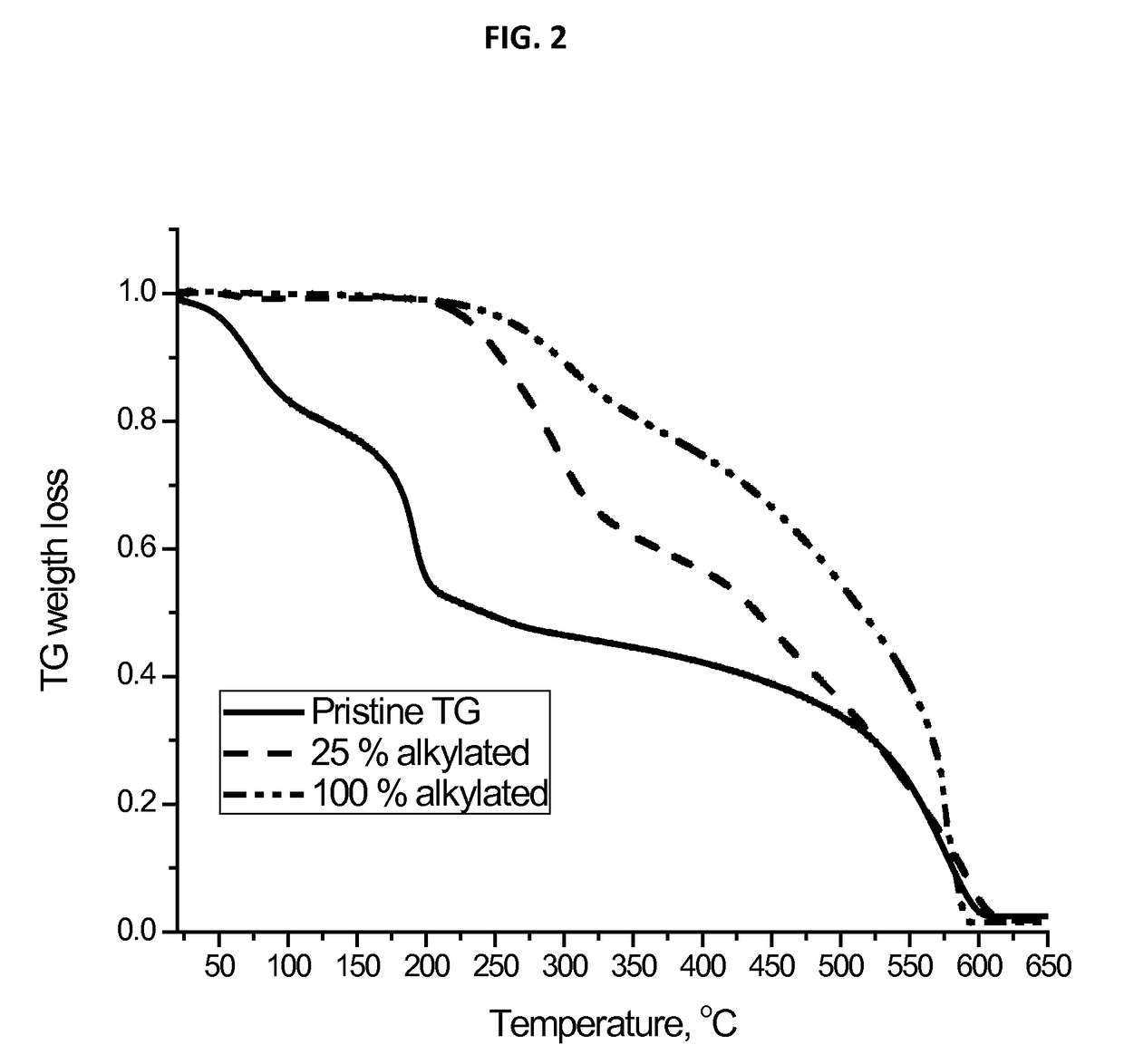Additive for combustion enhancement of liquid hydrocarbon fuels
a technology of additives and fuels, applied in the direction of liquid carbonaceous fuels, petroleum industry, lighting and heating apparatus, etc., to achieve the effect of increasing energy density and fuel characteristics and performance effects
- Summary
- Abstract
- Description
- Claims
- Application Information
AI Technical Summary
Benefits of technology
Problems solved by technology
Method used
Image
Examples
example 1
[0037]Various alkyl-functionalized graphene oxide samples were synthesized and characterized by conventional analytical methods. Each sample was added to a liquid hydrocarbon fuel, namely JP-8, to yield an embodiment of the composition of this invention. The storage stability of each prepared composition of this invention was evaluated over 650 hours of test time.
[0038]Graphene oxide containing 25 percent by weight total oxygen functionalization as epoxy, hydroxl, and carboxyl groups was obtained from Cheap Tubes Inc, Brattleboro, Vt. All other chemicals were purchased from Sigma-Aldrich. In order to increase the compatibility of graphene oxide with liquid hydrocarbon fuels, the graphene oxide was functionalized with a plurality of alkyl chains having 8 or more carbon atoms, by coupling an alkyl amine with the carboxyl groups located on the graphene oxide. Alkylation was accomplished through a two-step method as described by S. Choudhary, et al., in “Dispersion of alkylated graphene...
example 2
[0051]Compositions of this invention comprising JP-8 fuel and an alkyl-functionalized graphene oxide fuel additive were evaluated at Atlantic Product Services Inc. of New Jersey, a jet fuel testing facility. Each sample was analyzed by bomb calorimetry in accordance with standard method ASTM D240. For each sample the bomb calorimetry measurements were reported as Lower Heating Value (LHV) per unit weight of fuel sample (e.g., BTU / lb or kJ / g). Gravimetric fuel density (Specific Density, SG) was also measured at Atlantic Product Services, Inc. using standard method ASTM D4052. Applicants also measured Specific Gravity (SG) in Applicants' laboratory using the well-known hydrometer-meniscus method. Specific gravity is reported as weight per volume fuel, e.g. lb / gal or g / l. Energy density, given in units of BTU / gallon (BTU / gal) or kiloJoules / liter (KJ / l), was calculated as a product of the LHV / wt times the Specific Gravity. The energy densities calculated from both laboratories fell with...
example 3
[0055]A simulated combustor was fabricated using an air blast atomizing nozzle to direct a stream of fuel into an optically accessible, cylindrical quartz combustion chamber. The fuel flow was controlled using a calibrated external fuel pump. Air flow to the combustor consisted of the atomizing air, plus an additional air inlet provided through a cap to introduce air tangential to the combustor creating a high swirling flame zone in the combustor. The advantage to this design allowed full optical access to the flame zone. A flow of 7 g / min fuel was used with sufficient air to achieve an overall equivalence ratio of 1.0 (stoichiometric operation) to obtain a stable, robust flame with JP-8 fuel.
[0056]Combustion of the compositions of this invention, comprising JP-8 fuel and fuel additive comprising the alkyl-functionalized graphitic carbon compound, were studied and compared with combustion of JP-8 fuel absent the fuel additive (blank or base fuel). The base fuel and fuel samples cont...
PUM
| Property | Measurement | Unit |
|---|---|---|
| boiling point | aaaaa | aaaaa |
| thickness | aaaaa | aaaaa |
| width | aaaaa | aaaaa |
Abstract
Description
Claims
Application Information
 Login to View More
Login to View More - R&D
- Intellectual Property
- Life Sciences
- Materials
- Tech Scout
- Unparalleled Data Quality
- Higher Quality Content
- 60% Fewer Hallucinations
Browse by: Latest US Patents, China's latest patents, Technical Efficacy Thesaurus, Application Domain, Technology Topic, Popular Technical Reports.
© 2025 PatSnap. All rights reserved.Legal|Privacy policy|Modern Slavery Act Transparency Statement|Sitemap|About US| Contact US: help@patsnap.com



